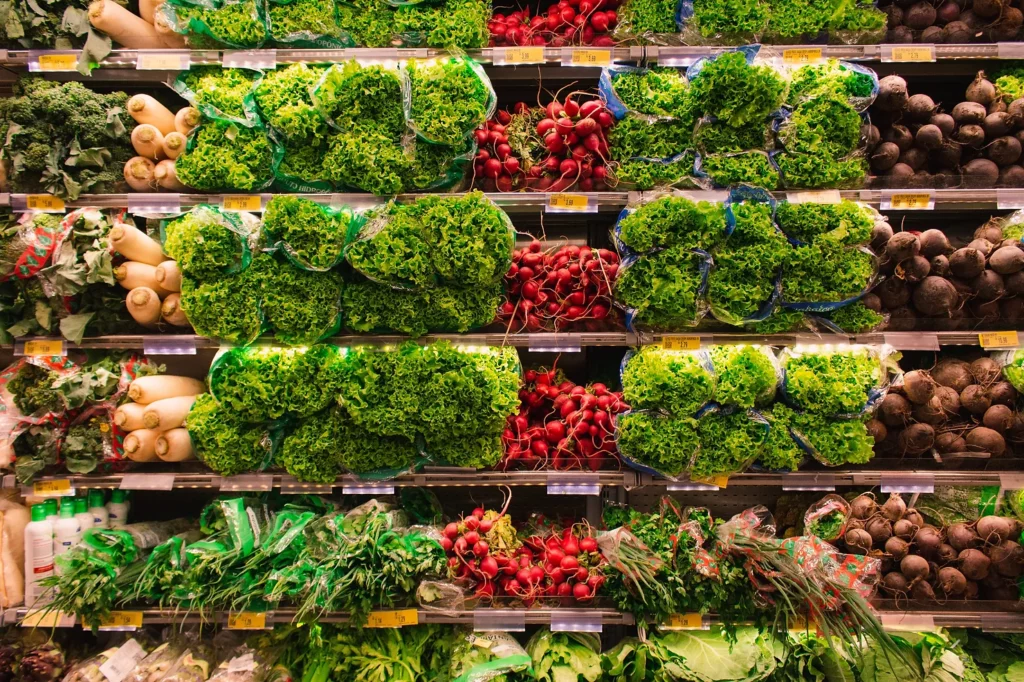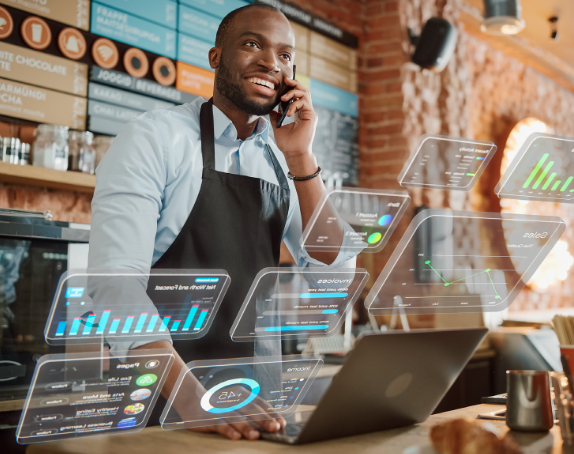December 28th, 2022
Grocery stores are constantly looking for ways to improve their operations and better serve their customers. One area that has seen significant growth in recent years is the implementation of artificial intelligence (AI). AI is being used in a variety of ways by grocery stores to streamline processes, reduce waste, and improve customer experiences.
One of the primary ways that grocery stores are using AI is to improve their forecasting and inventory management. With AI, grocery stores can analyze data on customer purchasing habits and use it to predict which products will be in high demand. This helps stores to order the right amount of products and avoid overstocking, which can lead to waste. Additionally, AI can help stores to optimize their inventory by identifying which products are not selling as quickly and reallocating them to areas of the store where they are more likely to be purchased.
Another area where grocery stores are using AI is in the fresh food departments. These departments often have shorter shelf lives and can be more prone to waste if not managed correctly. AI can help stores to better forecast demand for fresh products and optimize their ordering to reduce waste. Some stores are even using AI to track the freshness of products and alert employees when items need to be removed from the shelf.
AI is also being used in the customer experience. For example, some stores are using AI to make personalized product recommendations to customers based on their purchase history. This can help to improve customer satisfaction and drive sales.
Afresh
One company that is leading the charge in this field is Afresh, a San Francisco-based startup that provides AI solutions for the grocery industry.
Afresh was founded with the belief that fresh food is the future of grocery retail, but that it has been underserved by technology. The company’s solution, the Fresh Operating System, uses deep learning and reinforcement strategies to help stores forecast sales and optimize orders to minimize food waste. This not only helps grocery stores reduce waste and improve efficiency, but it also ensures that customers have access to the freshest products possible.
One of the key ways Afresh helps grocery stores is by providing real-time analytics and shopper behavior data to store managers. This allows them to maintain ideal inventory levels and make informed decisions about what products to stock and when. This is especially important when dealing with highly perishable items, which make up a significant portion of grocery store inventory. By using Afresh’s technology, stores can better forecast consumer demand and avoid overstocking or running out of certain products.
In addition to improving efficiency and reducing waste, Afresh’s technology also helps grocery stores provide a better shopping experience for their customers. By using data to predict what products consumers are looking for and ensuring that they are always in stock
Afresh’s Fresh Operating System has already had a significant impact on the grocery industry. The company has helped its customers achieve an average gross margin dollar expansion of more than 15%, and has diverted over 4.5 million pounds of food waste from landfills.
In the future, Afresh aims to continue expanding its reach and helping more grocery stores optimize their operations. The company is constantly working to improve its technology and provide even more value to its customers. With Afresh’s help, the grocery industry can become more sustainable, efficient, and customer-focused, benefiting everyone involved.
Afresh is a pioneer in the use of AI in the grocery industry, and is helping stores across the country reduce waste, improve efficiency, and provide a better shopping experience for customers. If you are a grocery store owner or manager, it is worth considering how Afresh’s technology could help your business.
Shelf Engine
Shelf Engine is a Seattle-based company that is using AI to revolutionize the grocery industry. Founded in 2016, the company uses artificial intelligence and machine learning to forecast consumer demand for perishable products and optimize order quantities for retailers.
One of the main challenges for grocery stores is managing the large number of SKUs, particularly highly perishable items such as produce, which make up a significant portion of inventory. Traditional forecasting methods, which often involve manual estimates and legacy software, can lead to overstocking or stockouts, both of which can result in significant waste and lost sales.
Shelf Engine’s technology addresses this problem by making millions of predictions each week about consumer demand and automating the ordering process for retailers. This not only helps stores stock the right products at the right time, ensuring that customers have access to the freshest options possible, but it also frees up labor to focus on other tasks such as customer service and product merchandising.
In addition to its AI-powered forecasting and ordering capabilities, Shelf Engine also offers a unique business model known as Results-as-a-Service (RaaS). Rather than charging a set monthly fee, the company invoices retailers based on the results achieved, with a guarantee that if a product doesn’t sell, it won’t be charged for it. This aligns Shelf Engine’s incentives with those of its retail customers and allows for a rapid deployment of the technology, with implementation typically taking only a couple of weeks.
Shelf Engine has seen impressive results since its founding, with the company automating more than 437,000 orders for its customers in 2021 alone. Its technology has helped some of the largest retail and foodservice brands in the world realize an average gross margin dollar expansion of over 15%.
As consumers become increasingly concerned about the food waste crisis and the impact it has on the environment, companies like Shelf Engine are playing a crucial role in helping grocery stores reduce waste, improve efficiency, and provide a better shopping experience for their customers.
Restaurants
As the world becomes more digitally connected and data-driven, it’s no surprise that many industries are turning to artificial intelligence (AI) to streamline their operations and improve efficiency. One industry that has been slower to adopt AI, however, is the restaurant industry. While grocery stores have been using AI for tasks such as forecasting consumer demand and optimizing orders to minimize food waste, restaurants have been slower to adopt these technologies.
But it seems that this is starting to change. The restaurant industry is beginning to catch on to the benefits of implementing artificial intelligence (AI) in their operations. Like the grocery industry, restaurants face challenges with forecasting consumer demand and managing inventory, leading to costly food waste and inefficiencies. AI solutions can help restaurants optimize their inventory and reduce waste by providing real-time analytics and shopper behavior data to managers. This allows them to make informed decisions about what products to stock and when, ensuring that they have the right amount of ingredients on hand and avoiding overstocking or running out of certain items.
In addition to improving efficiency and reducing waste, AI can also enhance the customer experience in restaurants by predicting what products consumers are looking for and ensuring that they are always in stock. This can help restaurants reduce wait times and improve the overall dining experience for customers.
Another benefit of AI in the restaurant industry is its ability to streamline operations and improve the accuracy of orders. By using AI to automate tasks such as taking orders and processing payments, restaurants can reduce the chances of mistakes and improve efficiency.
ClearCOGS is a company that uses AI and machine learning to help restaurants manage their cost of goods sold (COGS) more effectively. COGS refers to the actual cost incurred in making the food and beverages sold by a restaurant in any given time frame. This cost is typically 25-40% of a restaurant’s sales and is directly proportional to the restaurant’s profits. By using ClearCOGS, restaurants can enter their entire menu in less than 20 minutes and receive demand forecasting and other operational insights to make more data-driven, proactive decisions about food prep and ordering.
Both Afresh and ClearCOGS are using AI to improve efficiency and reduce waste in the food industry. Afresh helps grocery stores forecast consumer demand and optimize orders to minimize food waste, while ClearCOGS helps restaurants make more informed decisions about their COGS and improve their profitability. By leveraging AI, both Afresh and ClearCOGS are helping their clients navigate the challenges of the food industry and thrive in a competitive market.
While the adoption of AI in the restaurant industry is still in its early stages, it is clear that it has the potential to solve many of the challenges facing the industry. As more restaurants begin to see the benefits of AI, it is likely that it will become increasingly prevalent in the industry.








